In Situ Synchrotron X-ray Study of the Mechanical Properties of Pure Mg Produced by Powder Metallurgy
Abstract
:1. Introduction
2. Methods
2.1. Materials and Experimental Procedures
2.2. X-ray Data Analysis
3. Results
3.1. Initial Microstructure
3.2. Mechanical Properties Determined by In Situ Tensile Tests at Room Temperature
3.3. Texture Evolution
3.4. Peak Broadening during the Tensile Test
3.5. Dislocation Evolution Analysis
4. Discussion
5. Conclusions
- (1)
- Two pure Mg materials with different grain sizes (DH and FPS) were prepared by extrusion of Mg powders. After extrusion, porosity was less than 0.5% in both materials.
- (2)
- From the in situ tensile test, it was determined that the yield strength values of DH and FPS were 114 and 124 MPa, respectively. The elongation values of DH and FPS were 2.2% and 4.3%, respectively.
- (3)
- According to the analysis of diffraction peak broadening, <a>-type dislocations dominated the deformation of both materials. The DH material showed a higher fraction of <c + a> dislocations, which may be due to its smaller grain size causing more dislocation pile-up at grain boundaries.
Author Contributions
Funding
Acknowledgments
Conflicts of Interest
References
- He, B.B.; Hu, B.; Yen, H.W.; Cheng, G.J.; Wang, Z.K.; Luo, H.W.; Huang, M.X. High dislocation density–induced large ductility in deformed and partitioned steels. Science 2017, 357, 1029–1032. [Google Scholar] [CrossRef] [PubMed] [Green Version]
- Wang, M.; He, B.B.; Huang, M.X. Strong and ductile Mg alloys developed by dislocation engineering. J. Mater. Sci. Technol. 2019, 35, 168–169. [Google Scholar] [CrossRef]
- Wu, Z.; Curtin, W.A. The origins of high hardening and low ductility in magnesium. Nature 2015, 526, 62–67. [Google Scholar] [CrossRef] [PubMed] [Green Version]
- Liu, B.-Y.; Liu, F.; Yang, N.; Zhai, X.-B.; Zhang, L.; Yang, Y.; Li, B.; Li, J.; Ma, E.; Nie, J.-F.; et al. Large plasticity in magnesium mediated by pyramidal dislocations. Science 2019, 365, 73–75. [Google Scholar] [CrossRef]
- Gubicza, J. X-ray Line Profile Analysis in Materials Science; IGI Global: Hershey, PA, USA, 2014. [Google Scholar]
- Máthis, K.; Nyilas, K.; Axt, A.; Dragomir-Cernatescu, I.; Ungár, T.; Lukáč, P. The evolution of non-basal dislocations as a function of deformation temperature in pure magnesium determined by X-ray diffraction. Acta Mater. 2004, 52, 2889–2894. [Google Scholar] [CrossRef]
- Máthis, K.; Csiszár, G.; Čapek, J.; Gubicza, J.; Clausen, B.; Lukáš, P.; Vinogradov, A.; Agnew, S.R. Effect of the loading mode on the evolution of the deformation mechanisms in randomly textured magnesium polycrystals–Comparison of experimental and modeling results. Int. J. Plast. 2015, 72, 127–150. [Google Scholar] [CrossRef] [Green Version]
- Dragomir, I.C.; Ungár, T. Contrast factors of dislocations in the hexagonal crystal system. J. Appl. Crystallogr. 2002, 35, 556–564. [Google Scholar] [CrossRef]
- Scardi, P.; Leoni, M.; Delhez, R. Line broadening analysis using integral breadth methods: A critical review. J. Appl. Crystallogr. 2004, 37, 381–390. [Google Scholar] [CrossRef]
- Ungár, T.; Tichy, G.; Gubicza, J.; Hellmig, R.J. Correlation between subgrains and coherently scattering domains. Powder Diffr. 2005, 20, 366–375. [Google Scholar] [CrossRef] [Green Version]
- Bale, H.D. Small-Angle X-Ray-Scattering Investigation of Submicroscopic Porosity with Fractal Properties. Phys. Rev. Lett. 1984, 53, 596–599. [Google Scholar] [CrossRef]
- Guizar-Sicairos, M.; Georgiadis, M.; Liebi, M. Validation study of small-angle X-ray scattering tensor tomography. J. Synchrotron Radiat. 2020, 27, 779–787. [Google Scholar] [CrossRef] [PubMed]
- Ha, C.; Bohlen, J.; Yi, S.; Zhou, X.; Brokmeier, H.-G.; Schell, N.; Letzig, D.; Kainer, K.U. Influence of Nd or Ca addition on the dislocation activity and texture changes of Mg–Zn alloy sheets under uniaxial tensile loading. Mater. Sci. Eng. A 2019, 761, 138053. [Google Scholar] [CrossRef]
- Wcislak, L.; Klein, H.; Bunge, H.J.; Garbe, U.; Tschentscher, T.; Schneider, J.R. Texture analysis with high-energy synchrotron radiation. J. Appl. Crystallogr. 2002, 35, 82–95. [Google Scholar] [CrossRef] [Green Version]
- Yi, S.; Gan, W.; Brokmeier, H.G. Texture Analyses by Synchrotron X-rays and Neutrons; Wiley-VCH Verlag GmbH & Co. KGaA: Weinheim, Germany, 2017. [Google Scholar]
- Lutterotti, L.; Vasin, R.; Wenk, H.-R. Rietveld texture analysis from synchrotron diffraction images. I. Calibration and basic analysis. Powder Diffr. 2014, 29, 76–84. [Google Scholar] [CrossRef] [Green Version]
- Wenk, H.-R.; Lutterotti, L.; Kaercher, P.; Kanitpanyacharoen, W.; Miyagi, L.; Vasin, R. Rietveld texture analysis from synchrotron diffraction images. II. Complex multiphase materials and diamond anvil cell experiments. Powder Diffr. 2014, 29, 220–232. [Google Scholar] [CrossRef] [Green Version]
- Bachmann, F.; Hielscher, R.; Schaeben, H. Texture Analysis with MTEX–Free and Open Source Software Toolbox. Solid State Phenom. 2010, 160, 63–68. [Google Scholar] [CrossRef] [Green Version]
- Ribarik, G.; Ungar, T. Characterization of the microstructure in random and textured polycrystals and single crystals by diffraction line profile analysis. Mater. Sci. Eng. A 2010, 528, 112–121. [Google Scholar] [CrossRef]
- Ungár, T.; Stoica, A.D.; Tichy, G.; Wang, X.-L. Orientation-dependent evolution of the dislocation density in grain populations with different crystallographic orientations relative to the tensile axis in a polycrystalline aggregate of stainless steel. Acta Mater. 2014, 66, 251–261. [Google Scholar] [CrossRef]
- Cornelius, T.W.; Thomas, O. Progress of in situ synchrotron X-ray diffraction studies on the mechanical behavior of materials at small scales. Prog. Mater. Sci. 2018, 94, 384–434. [Google Scholar] [CrossRef]
- Cepeda-Jiménez, C.M.; Molina-Aldareguia, J.M.; Pérez-Prado, M.T. Effect of grain size on slip activity in pure magnesium polycrystals. Acta Mater. 2015, 84, 443–456. [Google Scholar] [CrossRef]
- Cepeda-Jiménez, C.M.; Molina-Aldareguia, J.M.; Pérez-Prado, M.T. Origin of the twinning to slip transition with grain size refinement, with decreasing strain rate and with increasing temperature in magnesium. Acta Mater. 2015, 88, 232–244. [Google Scholar] [CrossRef]
- Fan, H.; Aubry, S.; Arsenlis, A.; El-Awady, J.A. Grain size effects on dislocation and twinning mediated plasticity in magnesium. Scr. Mater. 2016, 112, 50–53. [Google Scholar] [CrossRef]
- Sim, G.D.; Kim, G.; Lavenstein, S.; Hamza, M.H.; Fan, H.; El-Awady, J.A. Anomalous hardening in magnesium driven by a size-dependent transition in deformation modes. Acta Mater. 2018, 114, 11–20. [Google Scholar] [CrossRef] [Green Version]
- Chino, Y.; Kimura, K.; Mabuchi, M. Twinning behavior and deformation mechanisms of extruded AZ31 Mg alloy. Mater. Sci. Eng. A 2008, 486, 481–488. [Google Scholar] [CrossRef]
- del Valle, J.A.; Carreño, F.; Ruano, O.A. Influence of texture and grain size on work hardening and ductility in magnesium-based alloys processed by ECAP and rolling. Acta Mater. 2006, 54, 4247–4259. [Google Scholar] [CrossRef]
- Wang, H.-Y.; Xue, E.-S.; Xiao, W.; Liu, Z.; Li, J.-B.; Jiang, Q.-C. Influence of grain size on deformation mechanisms in rolled Mg–3Al–3Sn alloy at room temperature. Mater. Sci. Eng. A 2011, 528, 8790–8794. [Google Scholar] [CrossRef]
- Zhang, D.; Wang, L.; Zhang, H.; Maldar, A.; Zhu, G.; Chen, W.; Park, J.-S.; Wang, J.; Zeng, X. Effect of heat treatment on the tensile behavior of selective laser melted Ti-6Al-4V by in situ X-ray characterization. Acta Mater. 2020, 189, 93–104. [Google Scholar] [CrossRef]
- Toby, B.H.; Dreele, R.B.V. GSAS-II: The Genesis of a Modern Open-Source All-Purpose Crystallography Software Package. J. Appl. Crystallogr. 2013, 46, 544–549. [Google Scholar] [CrossRef]
- Ilavsky, J.; Jemian, P.R. Irena: Tool suite for modeling and analysis of small-angle scattering. J. Appl. Crystallogr. 2009, 42, 347–353. [Google Scholar] [CrossRef]
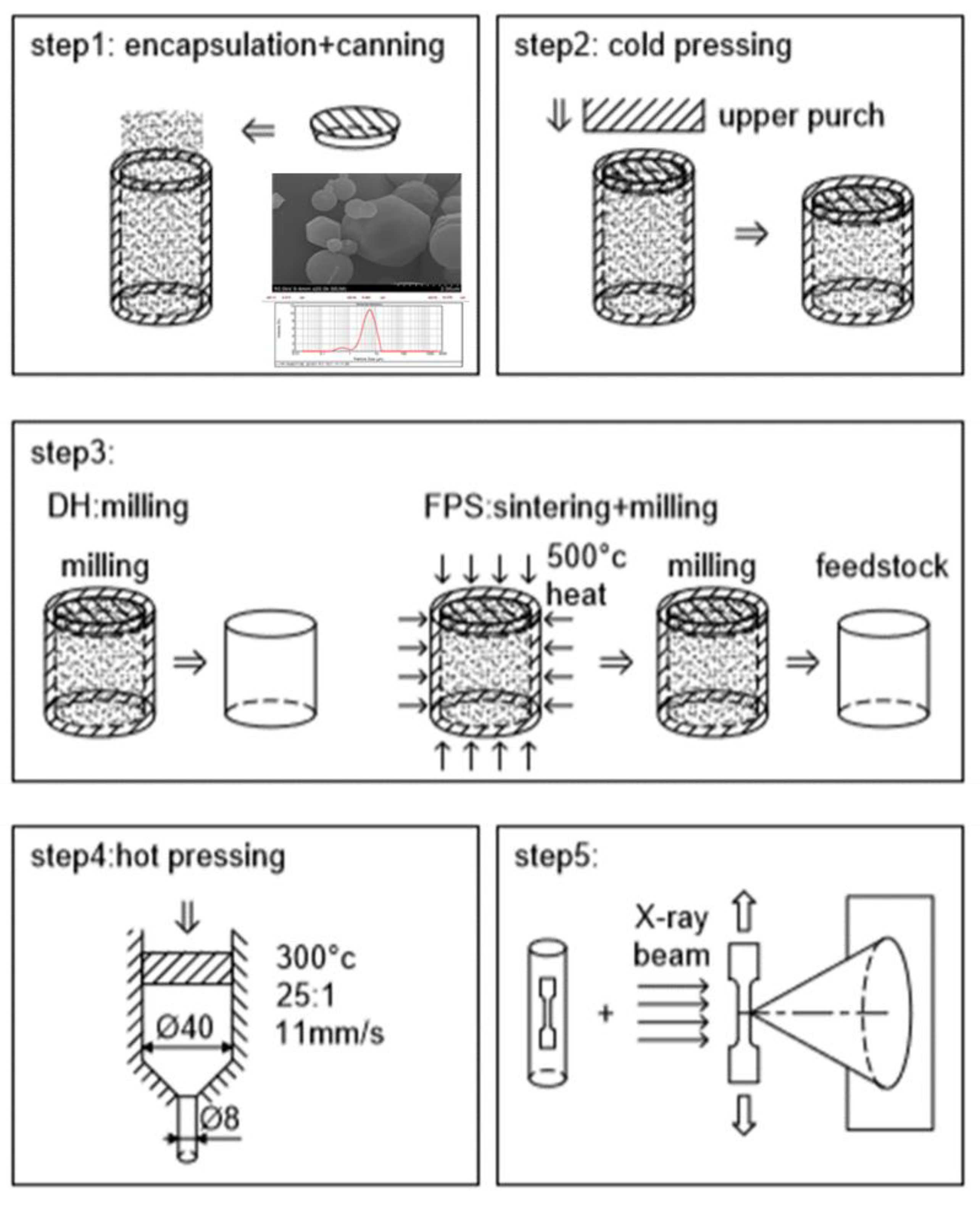
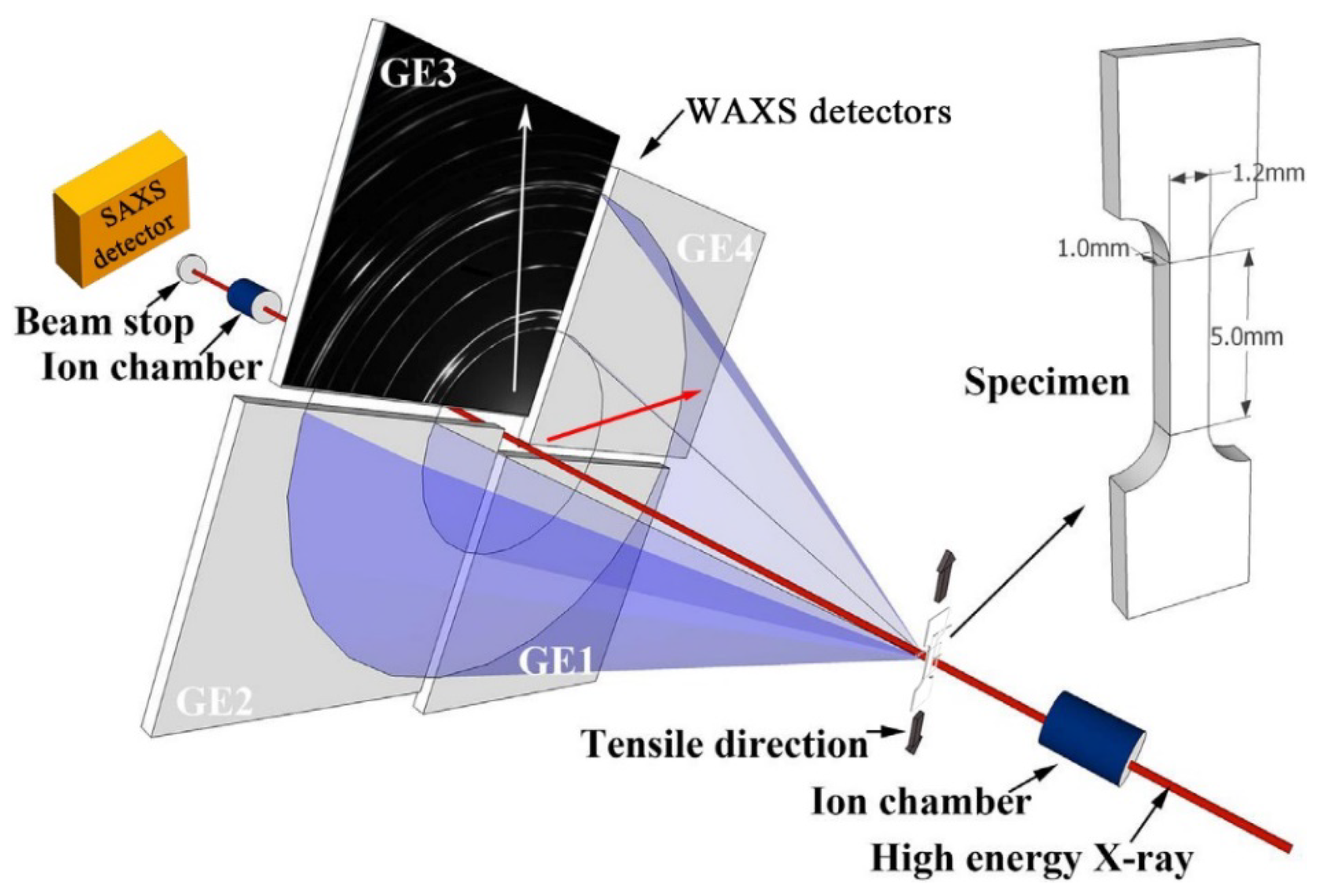
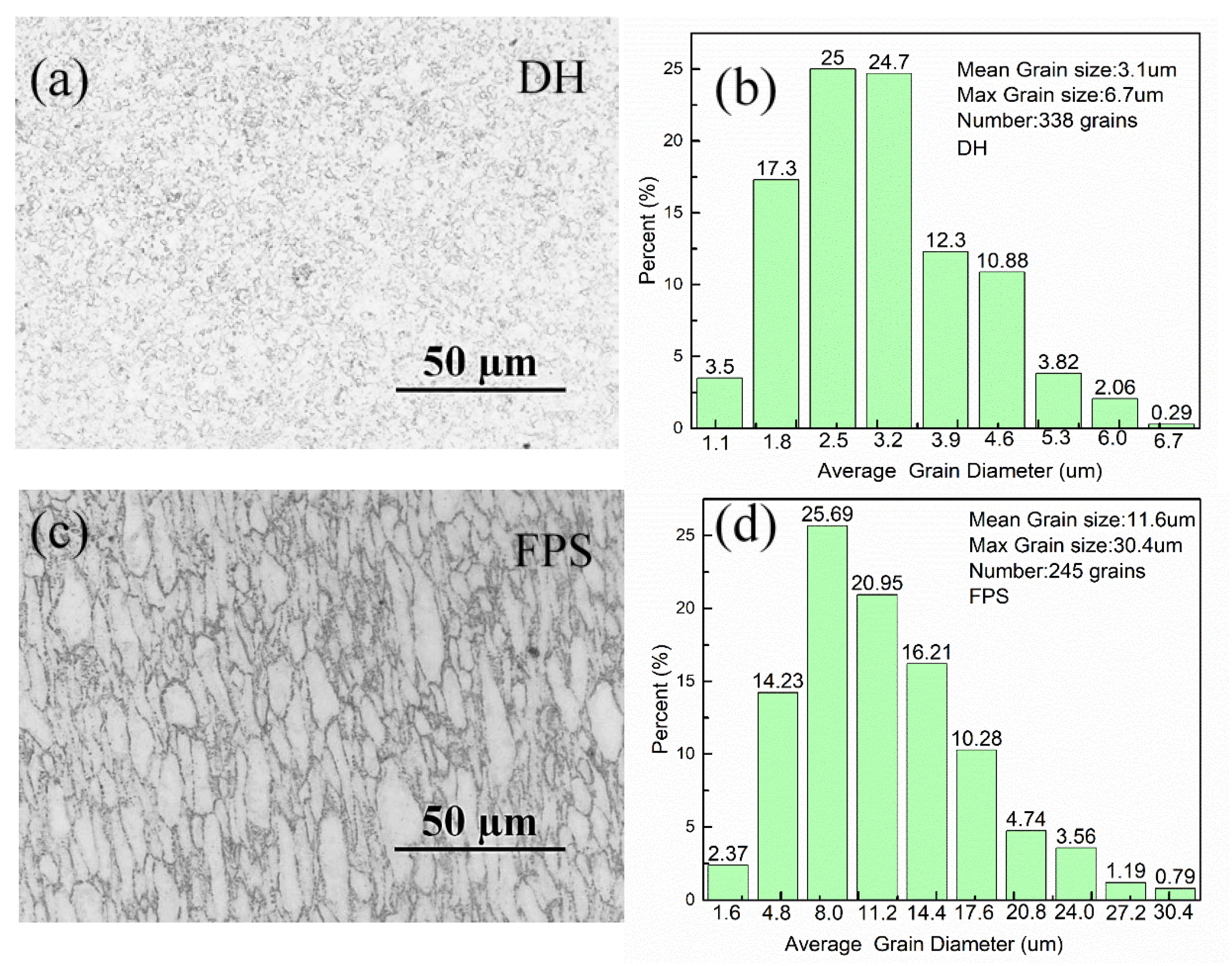

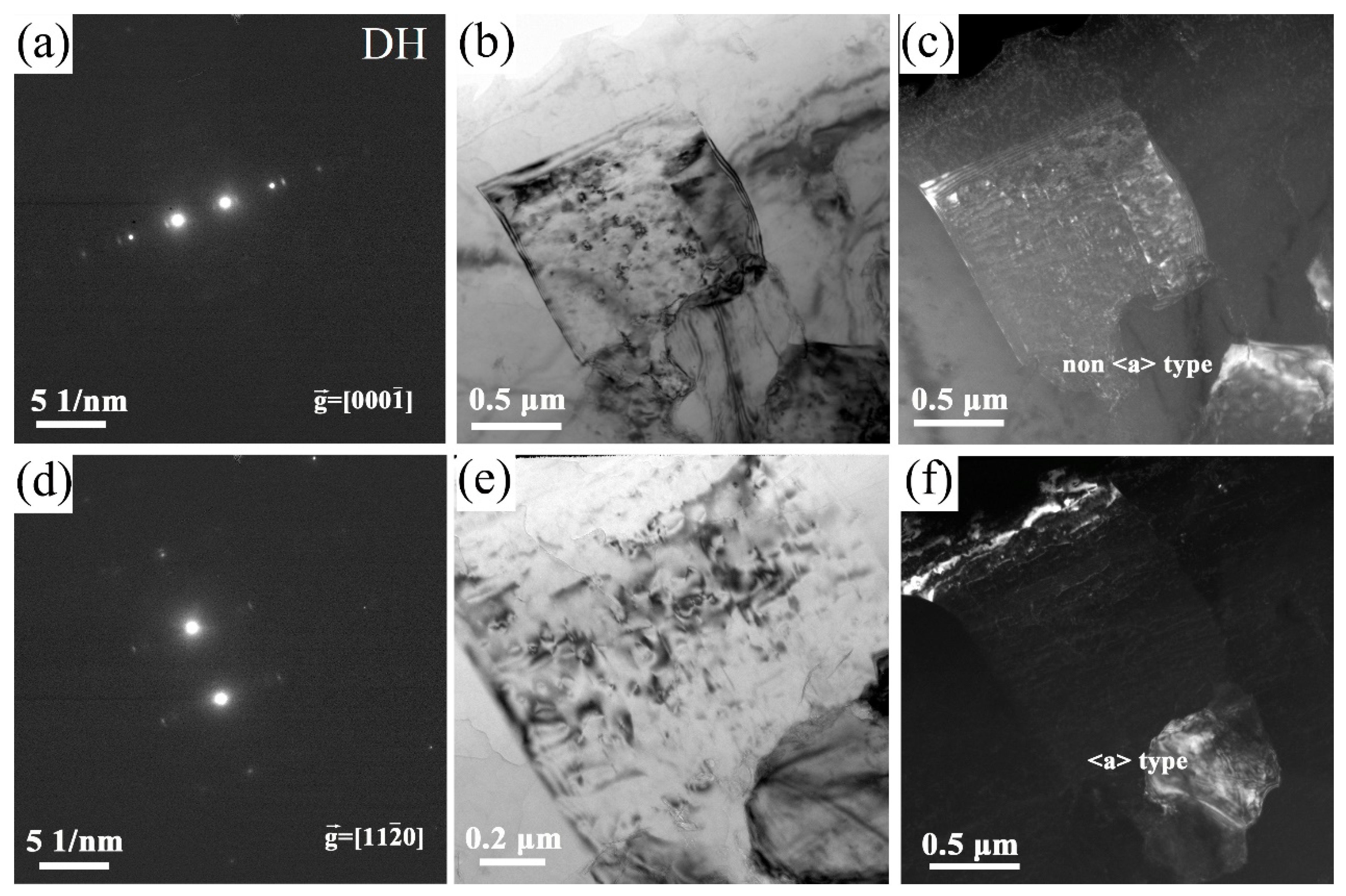

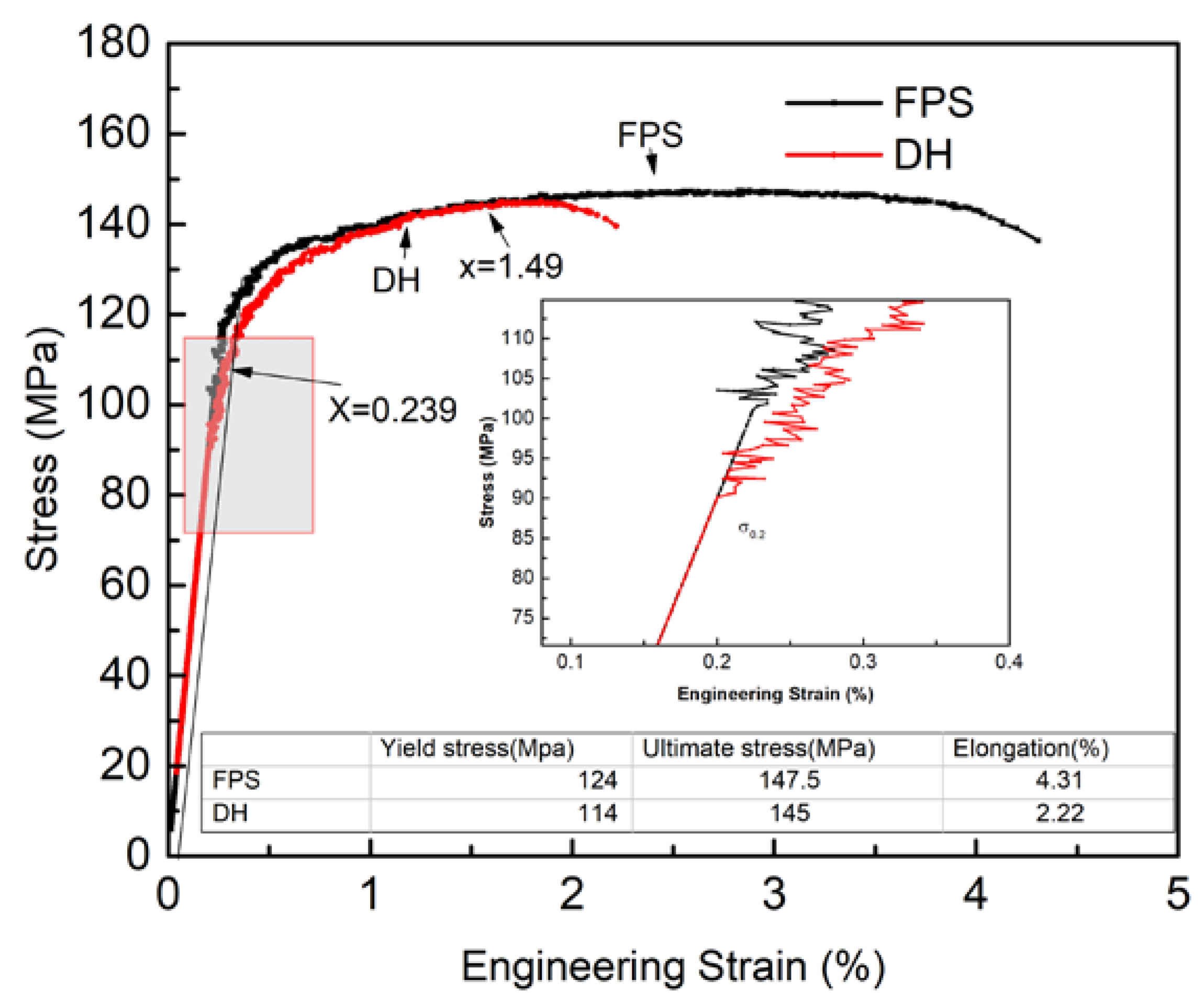
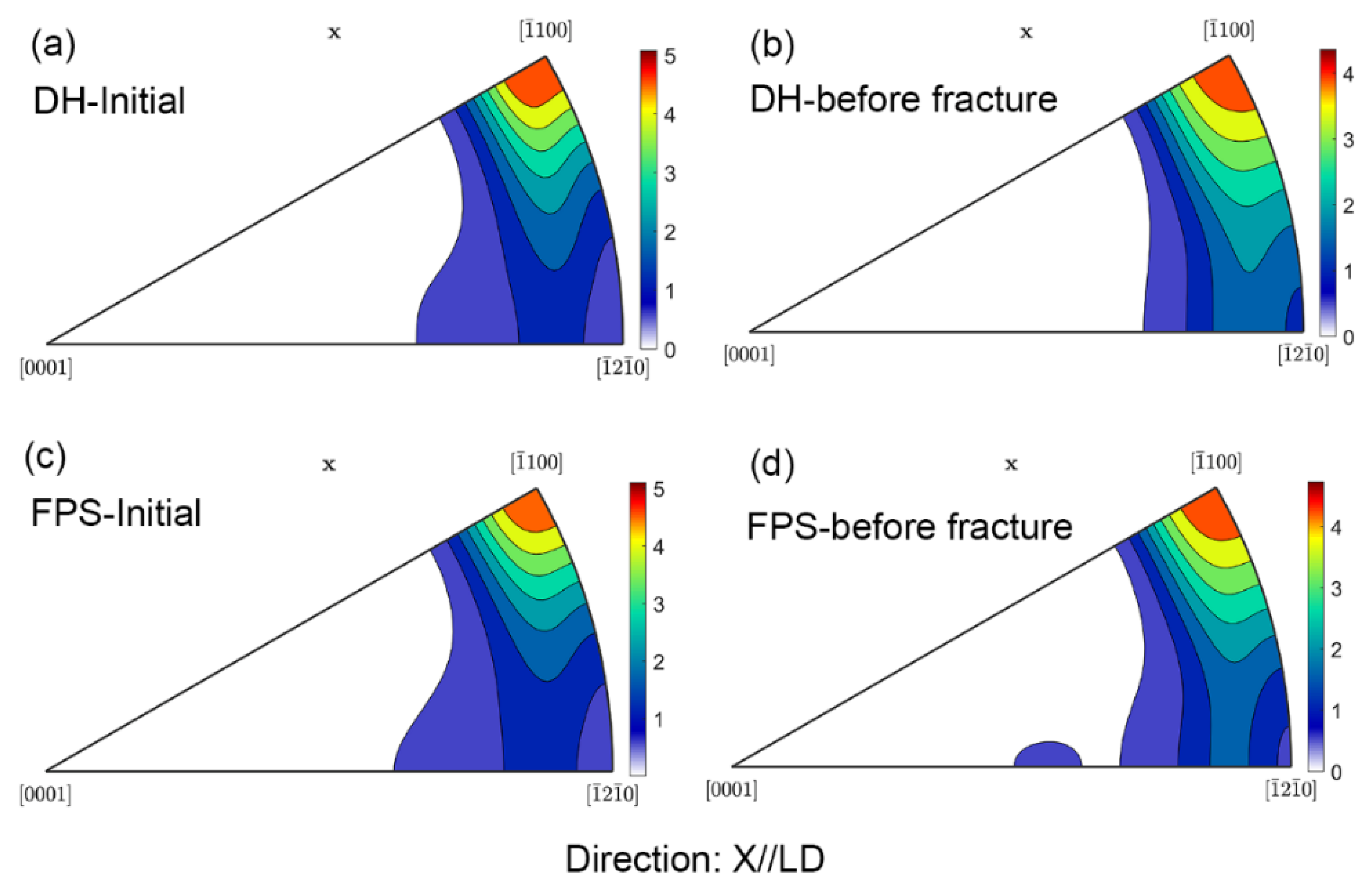

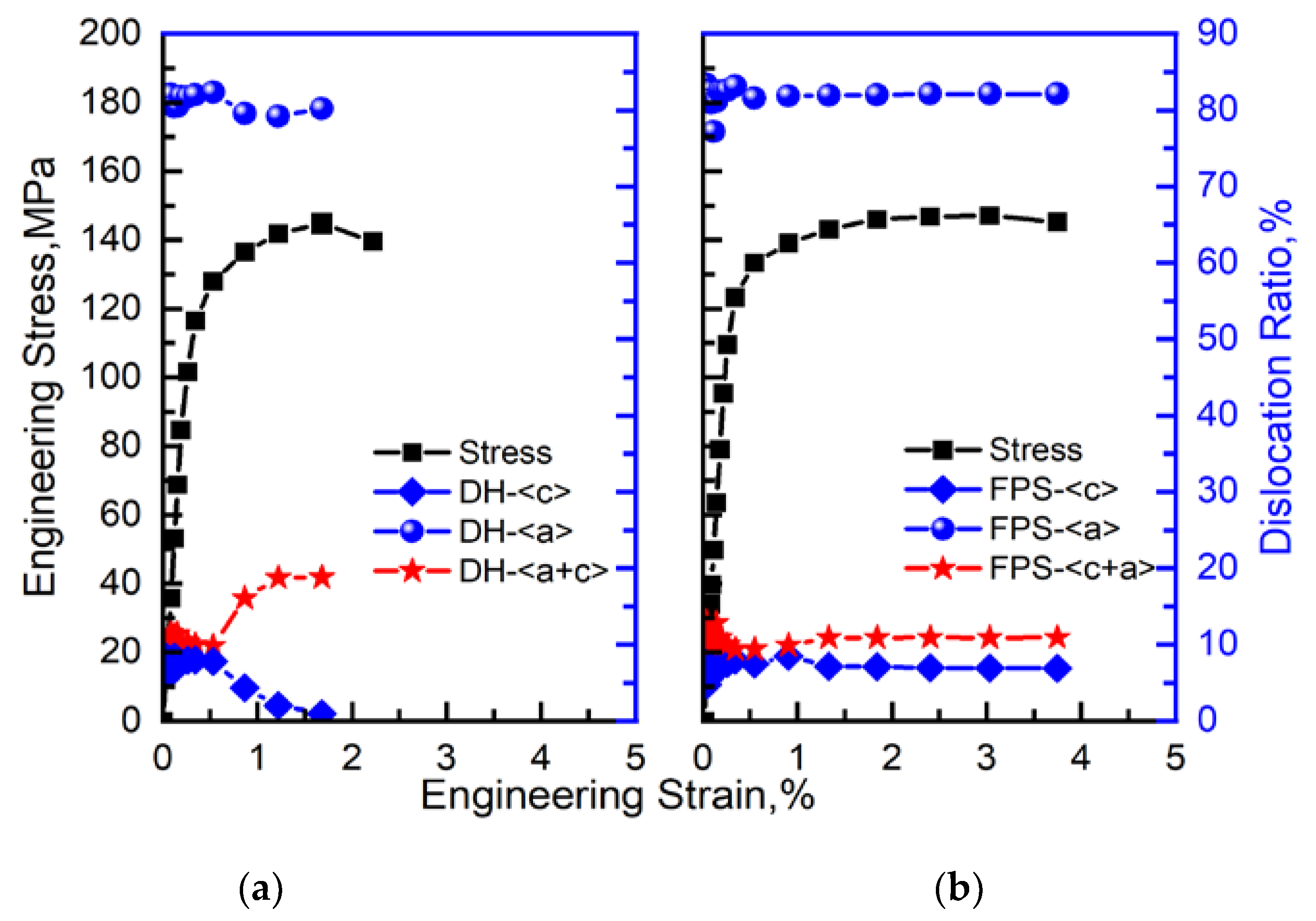
© 2020 by the authors. Licensee MDPI, Basel, Switzerland. This article is an open access article distributed under the terms and conditions of the Creative Commons Attribution (CC BY) license (http://creativecommons.org/licenses/by/4.0/).
Share and Cite
Li, L.; Wang, L.; Wang, J.; Zhang, H.; Zhu, Q.; Li, Z.; Zeng, X. In Situ Synchrotron X-ray Study of the Mechanical Properties of Pure Mg Produced by Powder Metallurgy. Metals 2020, 10, 1198. https://doi.org/10.3390/met10091198
Li L, Wang L, Wang J, Zhang H, Zhu Q, Li Z, Zeng X. In Situ Synchrotron X-ray Study of the Mechanical Properties of Pure Mg Produced by Powder Metallurgy. Metals. 2020; 10(9):1198. https://doi.org/10.3390/met10091198
Chicago/Turabian StyleLi, Li, Leyun Wang, Jie Wang, Huan Zhang, Qingchun Zhu, Zhiqiang Li, and Xiaoqin Zeng. 2020. "In Situ Synchrotron X-ray Study of the Mechanical Properties of Pure Mg Produced by Powder Metallurgy" Metals 10, no. 9: 1198. https://doi.org/10.3390/met10091198




